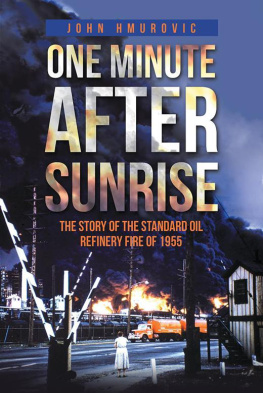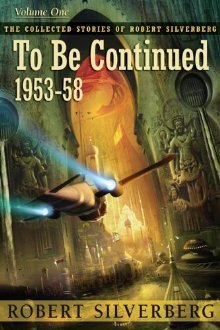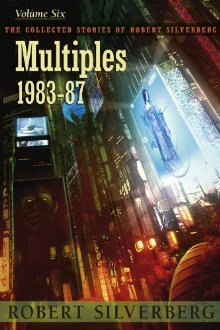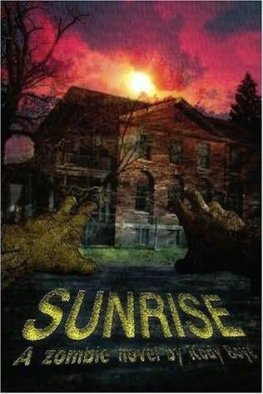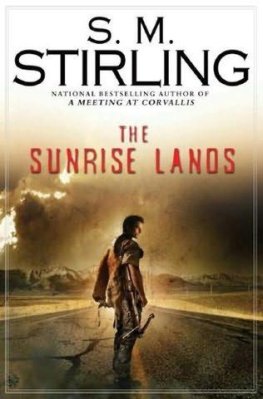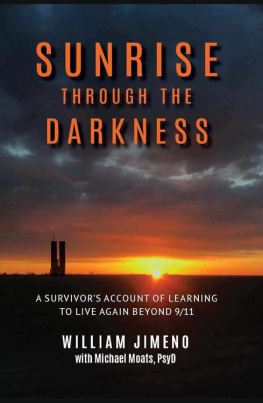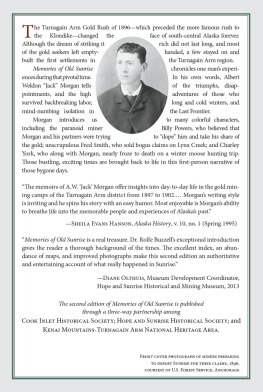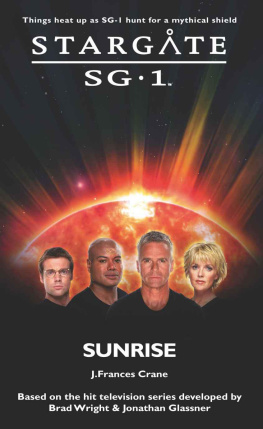ONE MINUTE
AFTER
SUNRISE
The Story of the Standard
Oil Refinery Fire of 1955
John Hmurovic

ONE MINUTE AFTER SUNRISE
THE STORY OF THE STANDARD OIL REFINERY FIRE OF 1955
Copyright 2017 John Hmurovic.
All rights reserved. No part of this book may be used or reproduced by any means, graphic, electronic, or mechanical, including photocopying, recording, taping or by any information storage retrieval system without the written permission of the author except in the case of brief quotations embodied in critical articles and reviews.
iUniverse
1663 Liberty Drive
Bloomington, IN 47403
www.iuniverse.com
1-800-Authors (1-800-288-4677)
Because of the dynamic nature of the Internet, any web addresses or links contained in this book may have changed since publication and may no longer be valid. The views expressed in this work are solely those of the author and do not necessarily reflect the views of the publisher, and the publisher hereby disclaims any responsibility for them.
Any people depicted in stock imagery provided by Thinkstock are models, and such images are being used for illustrative purposes only.
Certain stock imagery Thinkstock.
ISBN: 978-1-5320-1958-6 (sc)
ISBN: 978-1-5320-1959-3 (e)
Library of Congress Control Number: 2017903961
iUniverse rev. date: 04/20/2017
Contents
Frank VargoGayle Faulkner KosalkoChuck Kosalko.
These three people were essential in the creation of this book. Although I did the writing and much of the research, without them this book would not exist.
One morning in 2014, Frank and I were at the Whiting-Robertsdale Historical Society, where we volunteer our time. I suggested that we needed to capture the memories of those who lived through the 1955 Whiting Refinery disaster. The 60 th anniversary of that event was approaching, and everyone who remembered it was easily eligible for Social Security. He agreed, and we talked it over with fellow-volunteers Gayle Faulkner Kosalko and Chuck Kosalko. The four of us hatched a plan.
The first step was to spread the word that we were looking for people who remembered the disaster. Eighty-two people stepped forward. We interviewed 34 of them on camera and gathered written memories from the others. Those interviews formed the foundation of our research.
With the editing help of Rob Schultz we produced a video which premiered before a standing-room-only crowd at the Whiting High School Auditorium. We have since sold hundreds of copies of the video. All proceeds went to the Whiting-Robertsdale Historical Society, just as will all proceeds from the sale of this book. Late in 2015, the Indiana Historical Society chose our project for their annual Indiana History Outstanding Organization Event or Project Award.
Frank, Gayle, and Chuck helped edit the book, as did my wife, Bev Hmurovic; my sister, Susan Hmurovic; and my friend, Kate Murphy. Carol Badenhoop did a thorough final edit.
Thank you also to those who helped by contributing photographs: Betty Delinck, Ann Devoy, Dennis Hittle, Pat Mazanek, Ronald Plewniak, Cheryl Macko Rosen, Frances Vanek, and Gina Vitucci. Thank you also to Steve McShane of the Calumet Regional Archives at Indiana University Northwest. And thanks to John Lambert for his work on the maps.
I owe a great deal to my family. My father, John Hmurovic, loved his Slovak heritage. He loved history. He started me on the path that led to this book. My sister, Susan Hmurovic, another lover of history, also helped me along that route. I owe so much to them and my mother, Violet Lovrinich Hmurovic, for all the love and support they have given me. I was fortunate to have them as family.
But there is no one I value as much as my wife, Beverly Ramey Hmurovic. Thanks for your love and support. This project would not have been possible without it.
Thank you to all the wonderful people who helped with this book. I will always appreciate your friendship, love, and support
John Hmurovic
2017
Emily Timko was angry. And even though 13-year-old George Timko Jr. was still in bed on this Saturday morning, he could tell his mother was upset.
Whats the matter? he called out, only half awake.
That dogs been barking since two oclock in the morning and hasnt stopped, she responded.
It was the beagle next door. The neighbors always kept it in the garage overnight. On a hot summer morning like this, they left the garage window open about six inches to give the dog some air. But the dog never barked. Emily wondered what was going on.
She walked down a short flight of steps to the back door. She planned to go to the neighbors garage, open the door, and then let the dog out. When she got to her back door, much to her surprise, she saw the beagle standing just outside her door, barking and growling. Instead of looking at her it was looking toward the nearby Standard Oil Refinery.
She tapped on the door to get the dogs attention. The beagle turned his head but continued to face the refinery. Emily eventually got the dog to move. She watched him walk around the side of her house. She went back upstairs, into the kitchen, and got ready to put a pot of coffee on the stove.
It was then that she heard it.
BA-BOOM!
Oh my God! she screamed.
If George Jr. had been half asleep, he was now rapidly approaching 100 percent awake. It was the loudest sound he had ever heard. In a flash, he was on his feet. He must have put on a pair of jeans, but afterward he didnt remember doing that. He ran from his bedroom, out the back door and froze in place. He looked to the east, his head turned toward the sky. It was the kind of sight people saw on television, but not in real life. At least, not in his life. A huge cloud of black smoke billowed skyward. It was large, and getting larger by the second. And there were flames. Continuously, from beneath the black cloud, they shot out with the ferocity of an angry dragon.
Young George stood there in awe, but the words his father was uttering as he dashed to the back door also ran through his mind. Some of the words George Sr. used included language that George Jr. would not repeat before strangers, even decades later. What he would share was his father saying, Dont tell me they messed up that new unit.
George Sr. worked at the refinery, located just east of where the Timko family lived. He knew right away that the explosion came from the plant where a large new unit, just a few months old, was ready to go back online after a maintenance shutdown.
That was George Timko Jr.s first memory of that day. Even 60 years later, he clearly remembered where he was at that moment.
We all have Where were you? memories. Where were you when he proposed? Where were you when a loved one passed away?
Nations have Where were you? memories. Almost every generation seems to experience at least one. Where were you when you heard the Japanese bombed Pearl Harbor? When JFK was assassinated? When terrorists attacked the Twin Towers on 9/11?
Likewise, many smaller communities share common memories. In Whiting, Indiana, the question is: Where were you at one minute after sunrise, 6:12 a.m., on August 27, 1955? For George Timko and everyone who lived in the Whiting area at that time, the answer to that question is as ingrained in their memories as Pearl Harbor, the Kennedy assassination, or 9/11. For them, it was a time of deep fear, of awe at the power of an explosion and the fury of the fire that followed.
On that day, at one minute after sunrise, the largest oil refinery in North America exploded. This is the story of that explosion the most spectacular industrial accident in the history of Indiana and probably in all of Chicagoland. It is a story about people and their response to a disaster.
Next page
